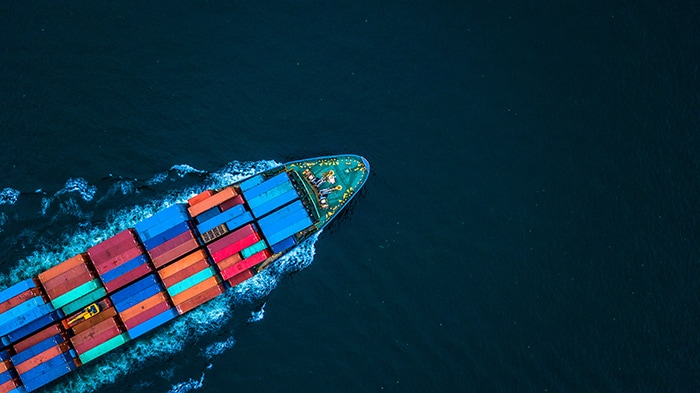Container Shipping Shifts Balance

The East Coast is back in fashion for import supply chains that rely on containerized ocean freight. However, for many small and mid-sized shippers with historic dependency on Southern California distribution hubs, old habits will be hard to break.
Container ports on the East Coast benefited from historic infrastructure investment in preparation for the Panama Canal expansion, which was completed in 2016. Larger ships now can reach East Coast ports faster and at a lower cost.
As a result, East Coast ports have grown their share of imports over the past decade. But no model accounted for the acceleration of this trend.
Quiet on the Coast
Supply chain disruption spurred by the pandemic created congestion and delays, which were particularly acute at Southern California ports. At peak levels in January 2022, 109 container ships idled off the coast of Long Beach, waiting for berth. Couple all this with a West Coast labor situation that remains tenuous and you see shippers voting with their feet. The West Coast ports haven’t been this quiet since 2011.
Adjusting an established supply chain is challenging for any company, but larger businesses have the building blocks to redesign their networks. Small or mid-sized importers—many of which have been dependent on Southern California as a distribution hub—have a harder time adjusting to the use of East Coast ports for a few key reasons:
- Lack of national distribution centers. Small and mid-sized firms often don’t have the same network established on the East or Gulf Coast that they have in Southern California to provide the care and handling import freight requires.
- Gaps in transportation networks. Smaller shippers often rely on a smaller network of carriers, brokers, and third-party logistics providers to move product to market.
- Control over the inventory pile. The biggest benefit to limiting the network to one distribution point is inventory control. And most importers who shift to East Coast gateways will split their inventory pile across multiple sites.
Small shipper’s to-do list
To navigate this dynamic landscape, shippers have to start by examining the complexity of their supply chains and the options in front of them. This process can include:
- Compare the cost and transit times associated with East Coast and West Coast ocean freight and inland logistics and verify that the financials work.
- Evaluate freight handling and value-added service requirements to ensure you can deliver consistent products to customers.
- Review the breadth and assortment of your inventory and identifying sales patterns by SKU or family of SKUs. Streamline or target the scope of what is moving to generate the most bang for your buck and mitigate risk and complexity.
- Take a closer look at your customer mix and delivery models. This includes understanding your mix of pickup versus delivered freight and volumes of business-to-business, business-to-consumer, or direct-to-consumer shipments.
- Build a model that incorporates all of the above and create and test scenarios: What if 20%, 30%, or 50% of your inbound freight shifts to the East Coast? The goal is to set about making systematic changes so you can manage and tweak your balance between ports over time.
Ultimately, shippers need to look at all the inputs that influence total landed cost, run scenario-based models, and measure the potential benefits against real-world implementation risks.

